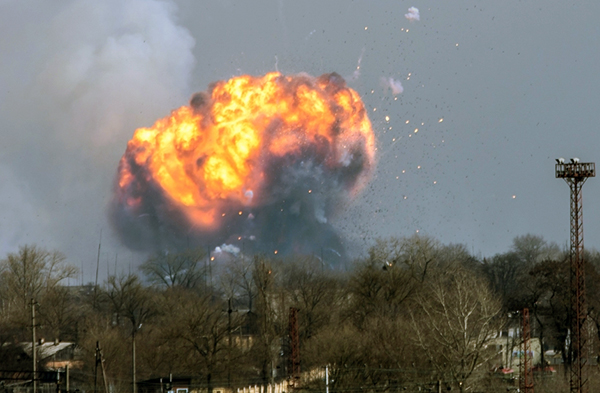Oksana Markarova, Ukraine’s ambassador to the US, told reporters after a meet with American lawmakers that Russia was resorting to the use of dangerous thermobaric bombs — or vacuum bombs — in Ukraine.
Reports from the Human Rights Watch stated that Russia also used cluster bombs to target a hospital in Vulhedar, in Ukraine’s Donetsk region. Four civilians were killed, and ten injured, among whom were six healthcare workers.
Cluster weaponry has been banned by the 2008 Convention on Cluster Munitions; however, neither Ukraine nor Russia were signatories at the convention. Given the scale of damage these controversial bombs can cause, and reports that they are being used in Ukraine, it would be useful to understand the function and impact of these bombs.
While the use of these bombs by Russia are yet to be independently verified, thermobaric rocket launchers have been seen on Russian TOS-1 vehicles.
These are called vacuum bombs as they suck in oxygen from surrounding areas to generate high-voltage explosions. The blast wave is of a greater intensity and duration than conventional bombs and can vapourise humans.
The thermobaric bomb involves a two-stage munition. The first stage converts carbon-based fuel into minute metal particulates, which are discharged as an aerosol. The second part detonates the aerosol, converting it into a huge fireball and simultaneously creating an impactful shock wave. Inside this shock wave, a vacuum is created, which draws in the nearby oxygen and exponentially enhances the severity of the explosion.
Analysts assume that Russia will use these vacuum bombs to target defensive Ukrainian postures. While they cannot be used in taking down tanks and other such military vehicles, they can dismantle civilian spaces, like residential or commercial complexes.
This is not the first time the bombs have been deployed. Reports suggest that they were used by the Soviet Union against China in 1969; the US used them to target Al-Qaeda; Russia also used them during the Chechen war.
Cluster bombs operate by breaking into smaller bombs once they are launched. Usually, they open mid-air and come down as “submunitions” or “bomblets” over a large area.
Very often cluster bombs do not detonate once they land and become landmines — prolonging conflict, misery and injury. Estimates say 10 to 40 per cent cluster bombs fail to detonate once they make an impact on the ground.
The unexploded cluster bombs also pose major long-term environmental damages, as their chemicals can severely contaminate ground water and soil compositions. Russia’s use of cluster bombs can have long-term effects on Ukraine’s ecology.
Once launched, their diffusion is also incredibly hard to control — making their impact unpredictable and unstable.
According to the Red Cross, 87 countries have stockpiles of cluster bombs, of which 16 have used them during armed conflict.


















